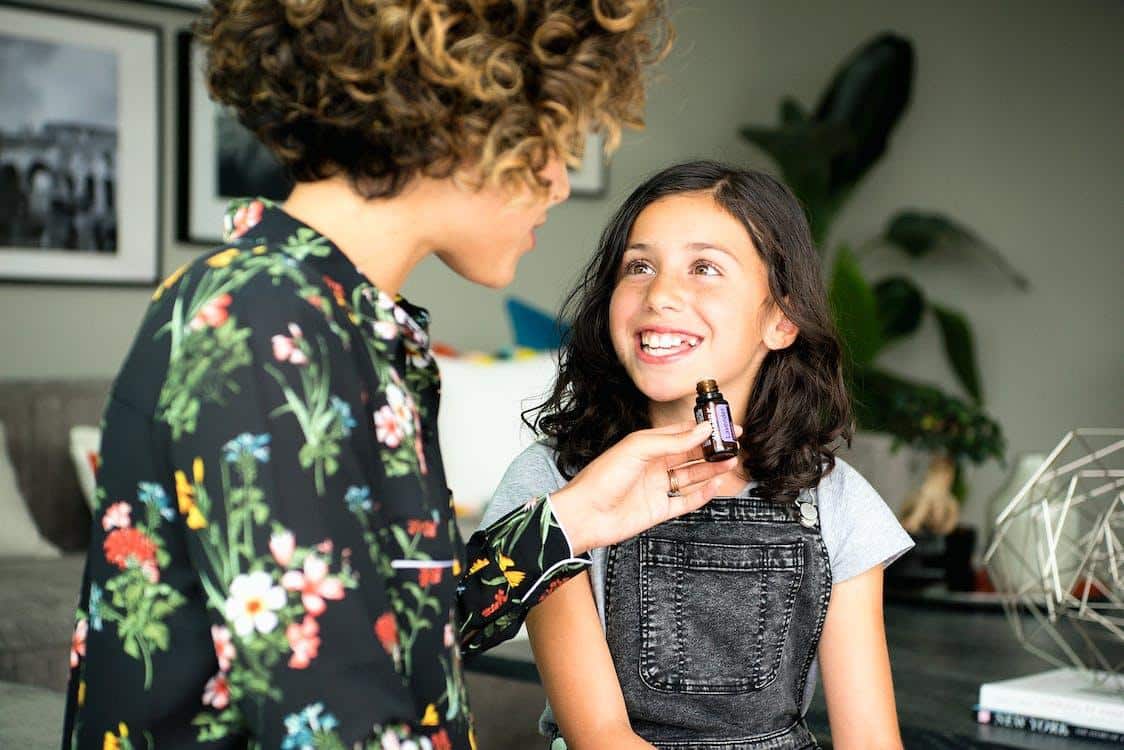Safety Guidelines and Tips for Essential Oils
Essential oils, extracted from various plants and celebrated for their aromatic and therapeutic properties, have gained immense popularity in recent years. Whether it’s for relaxation, skincare, or addressing common health concerns, essential oils have found their way into homes around the world.
However, with their widespread use comes an essential question: Are essential oils safe for use?
Today, we will explore some safety guidelines and methods to ensure you can incorporate essential oils into your daily life without any harm.
Understanding Essential Oils
Essential oils, the lifeblood of plants, are extracted from various sources such as leaves, flowers, stems, and roots through methods like steam distillation and cold pressing. These extraction techniques are employed to collect the concentrated essence of the plant’s unique fragrance and beneficial compounds. As a result, a small quantity of essential oil contains a potent concentration of the plant’s properties, making it a powerful resource.
The science behind essential oils is fascinating. These oils are developed with aromatic compounds, each carrying a distinct scent and potential health benefits. These compounds work in synergy to influence our emotions, cognitive function, and overall well-being. For example, lavender essential oil is renowned for its calming properties, while peppermint oil can invigorate and boost alertness.
However, not all essential oils are created equal. The quality and purity of essential oils vary widely across the market. At Maverik Oils, we are deeply committed to providing the highest quality essential oils. Our essential oils are carefully sourced from plants nurtured in ideal environments and harvested at the right time to maximize their potency. We have rigorous quality control measures, including third-party testing, to ensure that our oils are pure, free from contaminants, and potent in their therapeutic properties.
Dilution Guideline
One of the key considerations when using essential oils is how to apply them safely. While essential oils offer a wide range of benefits, their potency also necessitates careful handling and dilution.
1. Why Is It Necessary?
Essential oils are incredibly concentrated. Just a few drops can carry the aromatic and therapeutic qualities of the whole plant. However, this high concentration can be too potent for direct application to the skin or other surfaces. Dilution involves mixing essential oils with a carrier oil or other base to reduce their intensity, making them safer and more manageable.
2. Carrier Oils
Carrier oils, such as jojoba, coconut, or sweet almond oil, serve as the perfect partners for essential oils. They are less concentrated, and help disperse essential oils, reducing the risk of skin irritation or sensitization. The choice of carrier oil can also influence the absorption rate and skin benefits.
3. Proper Dilution Ratios
Safe dilution ratios can vary depending on the individual, age, skin type, and the specific essential oil being used. As a general guideline, a 2% dilution is suitable for most adults, which equates to about 12 drops of essential oil per ounce of carrier oil. For children, the elderly, or those with sensitive skin, a 1% dilution (about 6 drops of essential oil per ounce of carrier oil) is often recommended.
4. Special Considerations
Some essential oils are inherently more potent and may require even further dilution. Oils like cinnamon, oregano, and clove are among the stronger ones and should be used with extra caution.
Safety Tips for Topical Use and Skin Sensitivity
While essential oils can be highly beneficial, ensuring their safe topical application and preventing skin sensitivity are paramount. Here are some crucial safety tips:
1. Patch Testing
Before using any essential oil on a larger area of your skin, conduct a patch test. Apply a diluted mixture of the essential oil and carrier oil to a small, inconspicuous patch of skin, like the inner forearm. Wait 24 hours and check for any signs of irritation, redness, or itching. If a negative reaction occurs, refrain from using that specific essential oil.
2. Start Low and Go Slow
If you’re new to using essential oils, start with lower dilutions. Gradually increase the concentration as you become more familiar with how your skin reacts to them.
3. Sun Sensitivity
Be cautious when applying photosensitive essential oils, such as citrus oils (e.g., lemon, bergamot, and grapefruit), before sun exposure. These oils can make your skin more sensitive to UV rays and may lead to sunburn. If you’ve used a photosensitive oil, avoid direct sunlight for at least 12 hours.
4. Quality Matters
Choose high-quality essential oils from reputable sources. Purity and authenticity are crucial to avoid unwanted skin reactions.
5. Follow Safety Guidelines
Certain essential oils are known for their potential to irritate the skin. Oils like cinnamon, clove, oregano, and lemongrass are considered “hot” oils and should be used with extreme caution and higher dilution.
6. Store Safely
Keep essential oils out of direct sunlight and away from extreme heat, as environmental conditions can alter the composition of the oil, potentially leading to skin sensitization.
By following these safety tips, you can enjoy the benefits of essential oils without compromising the health of your skin. Skin sensitivity varies from person to person, so it’s essential to prioritize safety in your essential oil practices.

Inhalation and Aromatherapy
Inhalation is one of the most popular methods of using essential oils, often through methods like diffusers, steam inhalation, or even simply inhaling the aroma directly from the bottle. This method offers a range of benefits, including:
- Aromatherapy: The natural fragrances of essential oils can evoke various emotions and stimulate specific physiological responses. For instance, the soothing scent of lavender can help induce relaxation, while the zesty aroma of citrus oils can invigorate the mind.
- Respiratory Health: Inhaling essential oils can provide relief for respiratory issues. Eucalyptus, peppermint, and tea tree oils are known for their potential to ease congestion and promote easier breathing, making them valuable during cold and flu season.
- Mood Enhancement: Essential oils can have a deep effect on mood. Oils like lavender, chamomile, and frankincense can help reduce stress and anxiety, creating a calming and uplifting atmosphere.
However, when using essential oils for inhalation, it’s crucial to follow some safety measures:
- Proper Dilution for Diffusers: When using essential oil diffusers, adhere to the manufacturer’s guidelines for dilution. Most diffusers require a few drops of essential oil combined with water. This method safely disperses the essential oil into the air for inhalation.
- Keep Diffusers Clean: Regularly clean your diffuser to prevent the buildup of old oils, which may alter the aroma or potentially cause irritation.
- Ventilation: Ensure that the room in which you’re diffusing essential oils is adequately ventilated. This can help maintain a healthy atmosphere and prevent any buildup of concentrated aromas.
- Caution with Asthma and Allergies: If you or someone in your household has asthma or allergies, be cautious with essential oils. Strong scents may trigger respiratory issues, so always use oils that suit your particular needs.
Some essential oils require extra caution when used for inhalation. Oils like peppermint, eucalyptus, and camphor can be quite strong and may irritate the eyes or airways if not adequately diluted. For children, the elderly, or individuals with respiratory conditions, it’s often best to consult with a healthcare professional before using essential oils for inhalation.
Inhalation is a popular and effective method for experiencing the benefits of essential oils. However, as with all applications, understanding the oils and practicing safety measures is essential for a positive and safe experience.
Ingesting Essential Oils
Ingesting essential oils, while more controversial than other methods, is gaining popularity due to the oils’ potential health benefits. However, it’s a topic that requires careful consideration, as the safety and efficacy of internal use can be a subject of debate.
The Controversy of Ingesting Essential Oils
The controversy surrounding ingesting essential oils primarily revolves around safety and dosage. While many essential oils are considered safe when used in culinary applications – think of the subtle flavor of a single drop of lemon oil in a recipe – undiluted or excessive internal use can potentially lead to adverse effects.
Safe Ingestion Guidelines and Dosages
If you’re considering ingesting essential oils, it’s vital to follow safe guidelines:
- Quality Matters: Only ingest high-quality, pure essential oils from reputable sources like Maverik Oils. The purity of the oil can significantly affect its safety and efficacy.
- Proper Dilution: Never ingest essential oils undiluted. Instead, dilute them with a carrier oil, such as olive or coconut oil. A general rule is to add 1-2 drops of essential oil to a full glass of water or an edible base, but exact dilution ratios vary depending on the oil.
- Dosage Consideration: Pay attention to dosages. What’s safe for one oil may not be for another. For instance, oils like oregano and cinnamon should be used sparingly due to their potency.
- Consult a Professional: If you have underlying health conditions or are pregnant, it’s wise to consult with a healthcare professional before ingesting essential oils. Their guidance can help you make safe and informed choices.
Using Essential Oils in Food
While not all essential oils are suitable for ingestion, some are well-known in the culinary world and can add unique flavors to recipes. Oils like lemon, orange, and peppermint are used to enhance dishes, from salad dressings to desserts. They offer concentrated flavors that can be more potent than their fresh counterparts, so always use them judiciously.
The key to safe ingestion is to ensure that the essential oil is of the highest quality, properly diluted, and consumed in moderation. Keep in mind that less is often more when it comes to essential oils used for culinary purposes. If you’re unsure about using an essential oil internally, consult with a professional to ensure you’re making safe choices for your health.
Children and Essential Oils

When it comes to using essential oils around children, there are some safety concerns that every parent or caregiver should be aware of. While essential oils can offer various benefits, their potency requires cautious use, especially with young ones.
Safety Concerns for Children
Essential oils, when used improperly, can pose risks to children due to their sensitive skin, developing respiratory systems, and smaller body mass. Skin sensitivities and allergic reactions can be more pronounced in kids. Moreover, children may not be able to communicate discomfort or adverse effects effectively, making it crucial to prioritize safety.
Kid-Friendly Oils and Age-Appropriate Dilution
Using essential oils that are considered safe for children is vital. Some kid-friendly options include lavender, chamomile, and tea tree. However, even safe oils should be used with caution. Always dilute essential oils when applying to a child’s skin. For young children, a recommended dilution is around 0.5-1% (1-3 drops of essential oil per ounce of carrier oil). Be sure to patch-test a diluted oil on a small area of your child’s skin to check for any adverse reactions.
Safe Practices for Diffusing Around Kids
When using a diffuser around children, ensure the room is well-ventilated. Start with a minimal amount of essential oil – usually 1-3 drops, depending on the oil – and monitor your child’s response. If they show any signs of discomfort, remove them from the area immediately.
It’s also crucial to store essential oils out of reach of children and use child-resistant caps on bottles. Educate older children about essential oil safety and the importance of not ingesting or applying oils without adult supervision.
While essential oils can offer benefits to children, such as calming effects from lavender or eucalyptus for congestion relief, safety should be the top priority. When in doubt, consult with a pediatrician or a qualified aromatherapist to ensure that you are using essential oils safely and effectively around your little ones.
Conclusion
How can you ensure that the essential oils you use meet the highest quality and safety standards? The answer is to choose a reputable source like Maverik Oils.
Quality matters in every drop of essential oil. By selecting Maverik Oils, you’re not just investing in a product; you’re embracing a commitment to uncompromised quality and safety. Maverik Oils sets itself apart through a dedication to producing essential oils that meet and exceed industry standards. With a family-run legacy spanning over 60 years, Maverik Oils brings a wealth of experience and expertise to the table.
Try them here.


